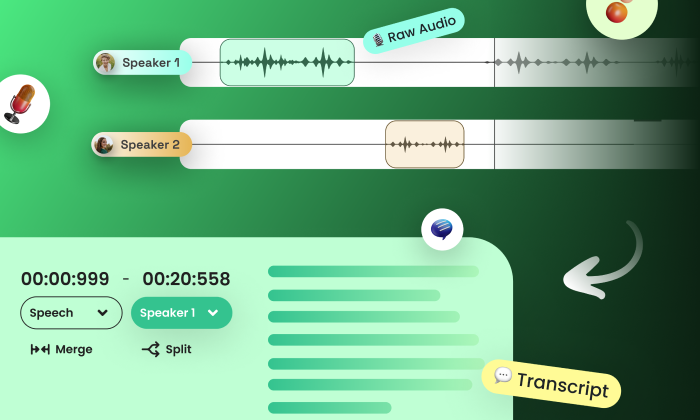What happens after a wake word is detected?
Wake Words
Voice Commands
Smart Devices
Wake word detection is only the beginning. Once a trigger phrase like “Alexa” or “Hey Siri” is recognized, a highly coordinated series of processes unfolds. For voice AI teams building intelligent assistants, understanding this post-detection pipeline is essential, it affects performance, latency, user satisfaction, and overall ROI.
At FutureBeeAI, we enable this next step with annotated, multilingual datasets, metadata-rich audio, and QA-validated pipelines built for precision and performance.
Key Takeaways
- The post-wake word pipeline: spanning audio capture, NLP, and command execution is the foundation of responsive voice UX
- On-device latency under 300 ms improves real-time interaction and energy efficiency
- FutureBeeAI’s YUGO platform enables structured, timestamped audio collection with dual-layer annotation workflows
The Post-Detection Pipeline: From Wake Word to Execution
Once a wake word is detected, the voice assistant transitions from passive to active mode. The next stages are mission-critical for delivering timely, accurate responses.
1. Audio Processing
- Signal capture begins immediately post-wake word.
- Features like MFCCs or spectrograms are extracted, isolating the relevant voice input from background noise.
- Latency optimization is key, processing must occur in real-time. On-device systems often deliver responses within 200–300 ms.
FutureBeeAI’s metadata, including timestamps and environmental markers, helps developers tune performance across latency thresholds.
2. Command Recognition
- Contextual parsing begins via an NLP engine that interprets the user’s intent.
- Acoustic models adapt using post-detection features to fine-tune prediction accuracy.
- Language models trained on FutureBeeAI’s wake word and voice command datasets help decode natural variations in phrasing.
3. Execution and Feedback
- Once the intent is confirmed, the assistant triggers a command, turning off lights, playing music, or initiating a navigation route.
Why the Post-Detection Phase Is a Performance Multiplier
Voice UX and Retention
A seamless transition from activation to execution builds user trust. Every millisecond of lag or incorrect response erodes that experience.
System Optimization
Examining each stage of the post-wake pipeline helps identify failure points whether it's intent misclassification or slow execution.
Dataset Quality
Training on real-world, annotated samples is essential. FutureBeeAI’s datasets come with:
- Noise-level tagging
- Accent-specific labeling
- Speaker role metadata
- Contextual timestamps for post-trigger speech
These components are vital for testing model performance end-to-end.
Best Practices for Post-Wake Word Optimization
At FutureBeeAI, we recommend the following strategies for building robust post-detection systems:
- Robust Audio Input Handling: Use far-field microphones and varied background conditions during training for noise resilience.
- Iterative Learning Loops: Continuously refine NLP modules using real-time feedback from deployed models.
- Comprehensive Dataset Design: Leverage multilingual, accent-diverse recordings to support global deployments.
Our YUGO platform enables this through structured data capture, QA, and retraining support.
Real-World Use Cases
Smart Home Devices
A command like “Hey Google, turn off the lights” initiates an entire backend process from signal segmentation to command routing executed in milliseconds with zero user friction.
Automotive Voice Systems
In cars, the stakes are higher. Wake word detection must be followed by fast, accurate command processing hands-free calling, route planning, and infotainment control under varying road noise conditions.
Pro Tip: Use FutureBeeAI’s OTS datasets available in 100+ languages, including automotive-ready dialect variants, for rapid deployment across regions.
FAQ
How is wake word latency measured?
It is typically measured from the moment of wake word detection to the moment the system executes a command or responds.
Can enterprises customize post-detection flows?
Yes. Using FutureBeeAI’s custom dataset services, teams can optimize for specific triggers, accents, languages, and usage scenarios.
Final Thoughts: Going Beyond the Wake Word
Wake word detection may open the door, but the journey happens after. A well-optimized post-detection pipeline makes the difference between a delightful and frustrating user experience.
Whether you're building from scratch or scaling an existing voice assistant, FutureBeeAI offers:
- Production-ready speech datasets with real-world annotations
- Custom audio data collection tailored to your domain and users
- Rapid delivery timelines of 2–3 weeks for enterprise deployment
Contact us to explore how we can support your voice AI roadmap with purpose-built data infrastructure.
What Else Do People Ask?
Related AI Articles
Browse Matching Datasets
Acquiring high-quality AI datasets has never been easier!!!
Get in touch with our AI data expert now!








